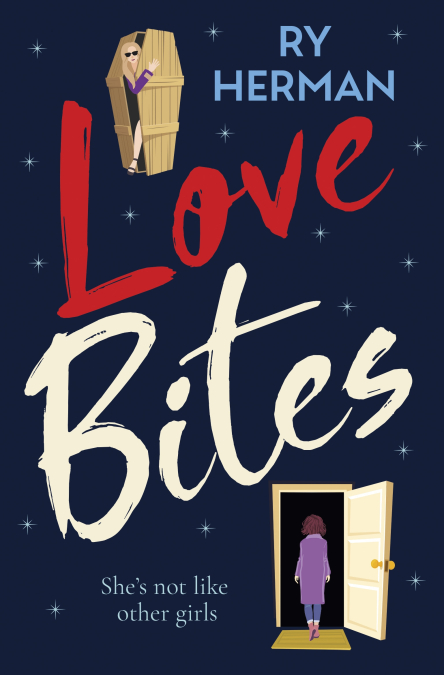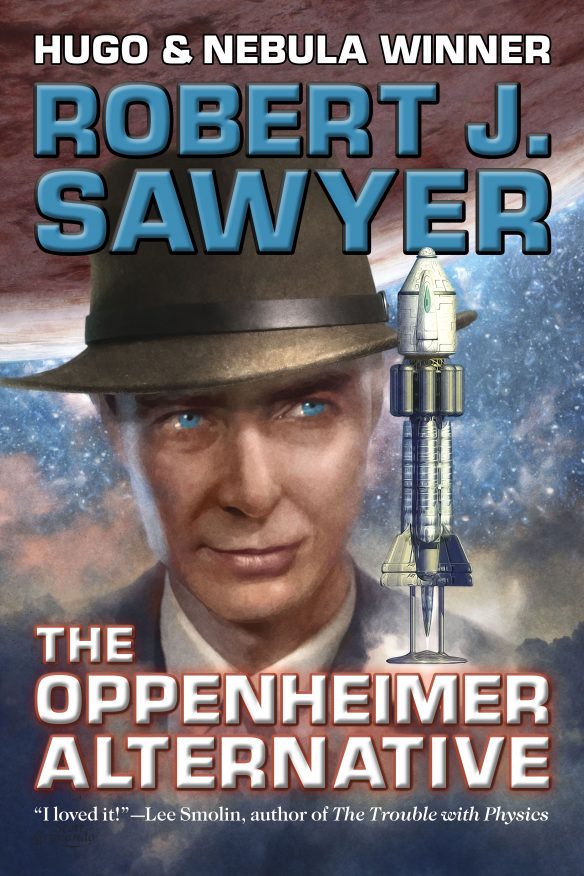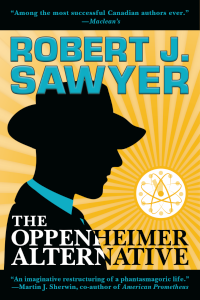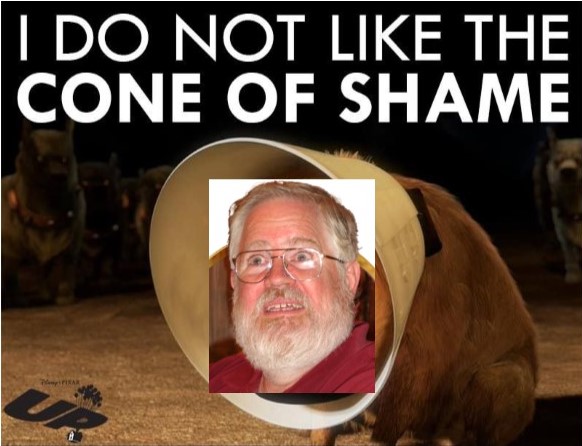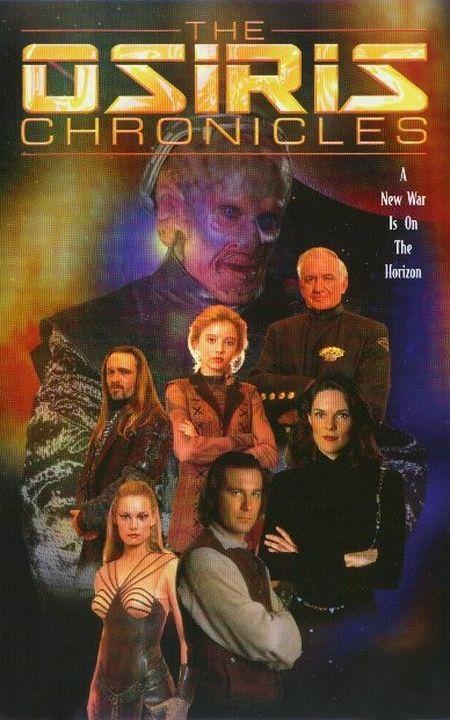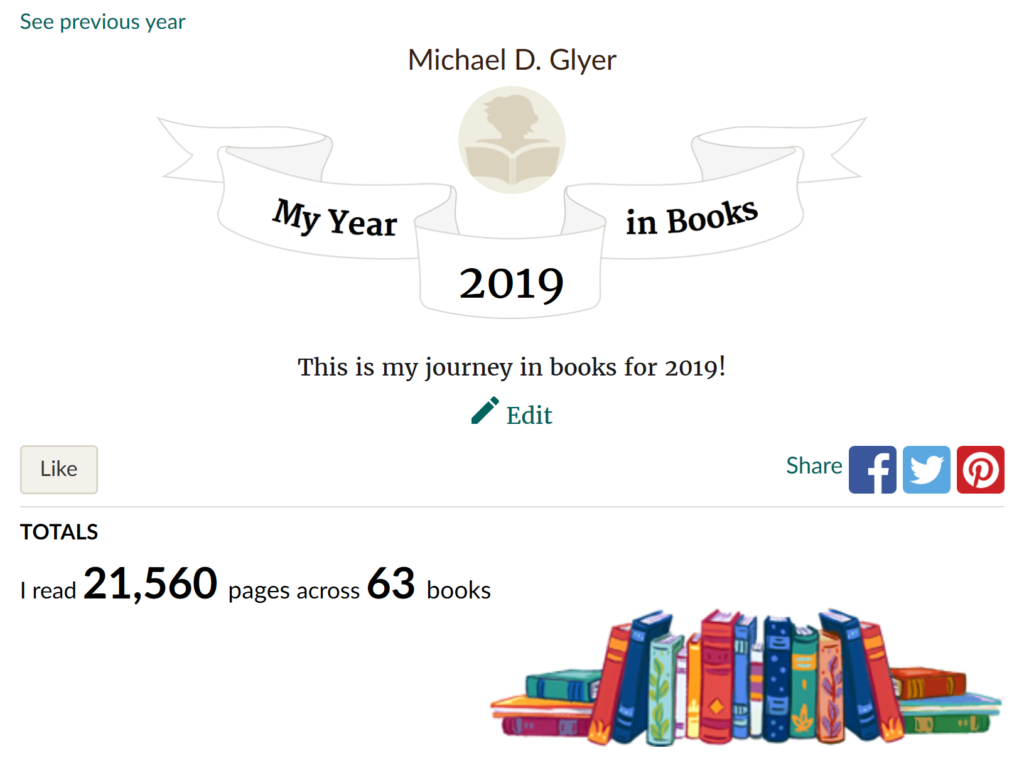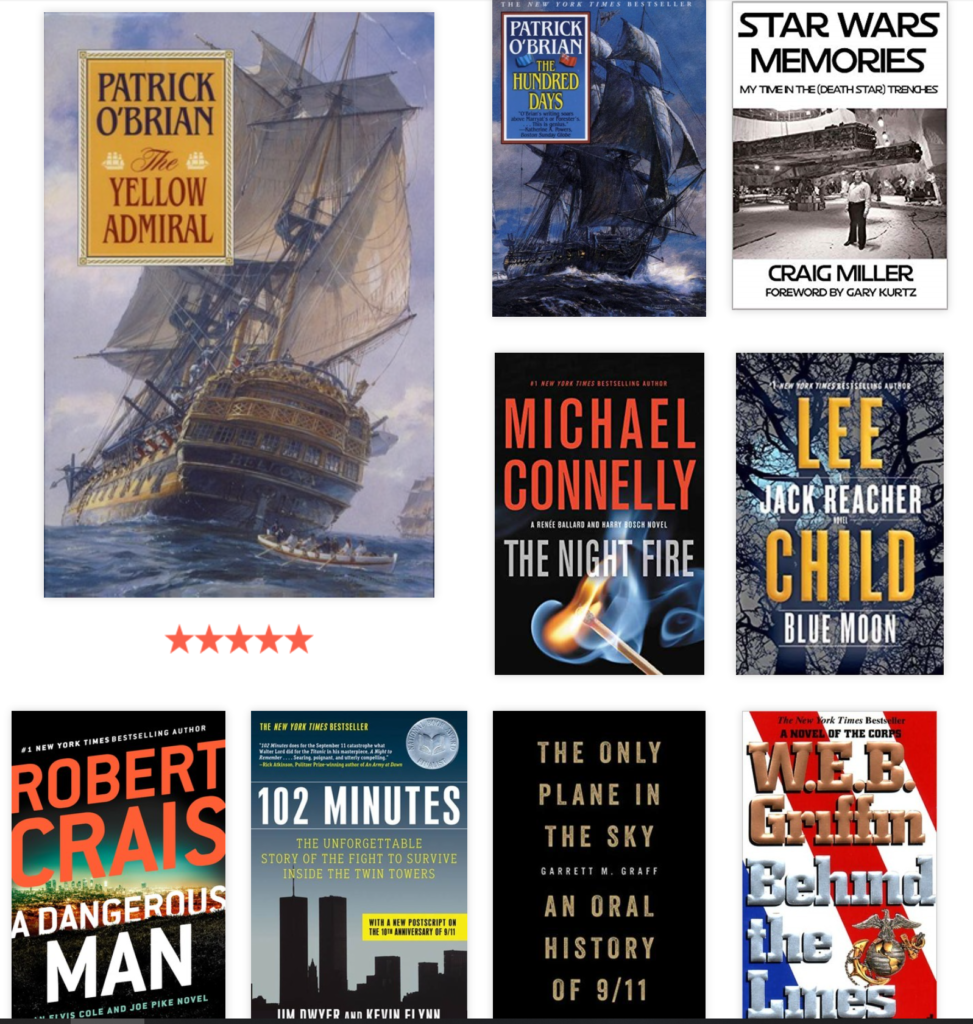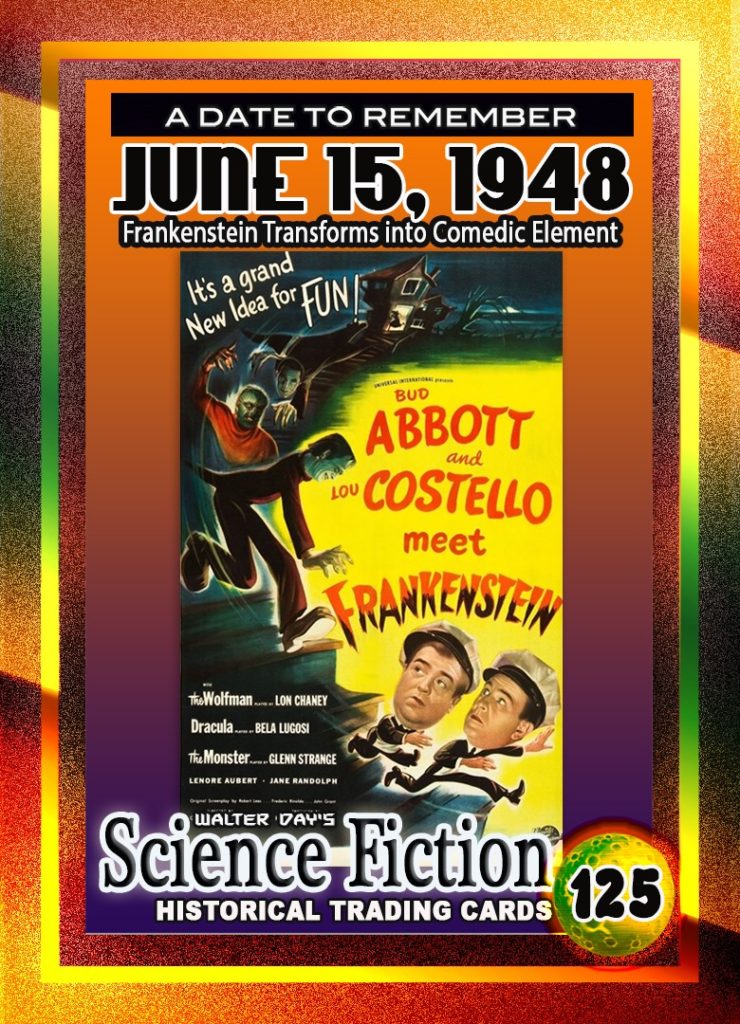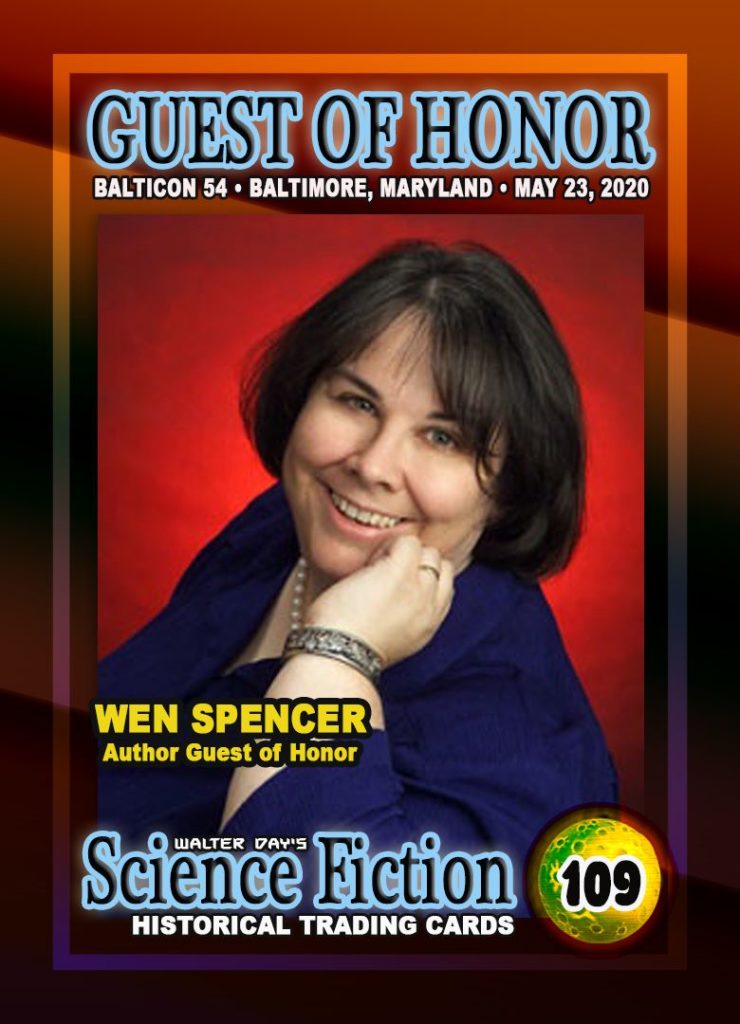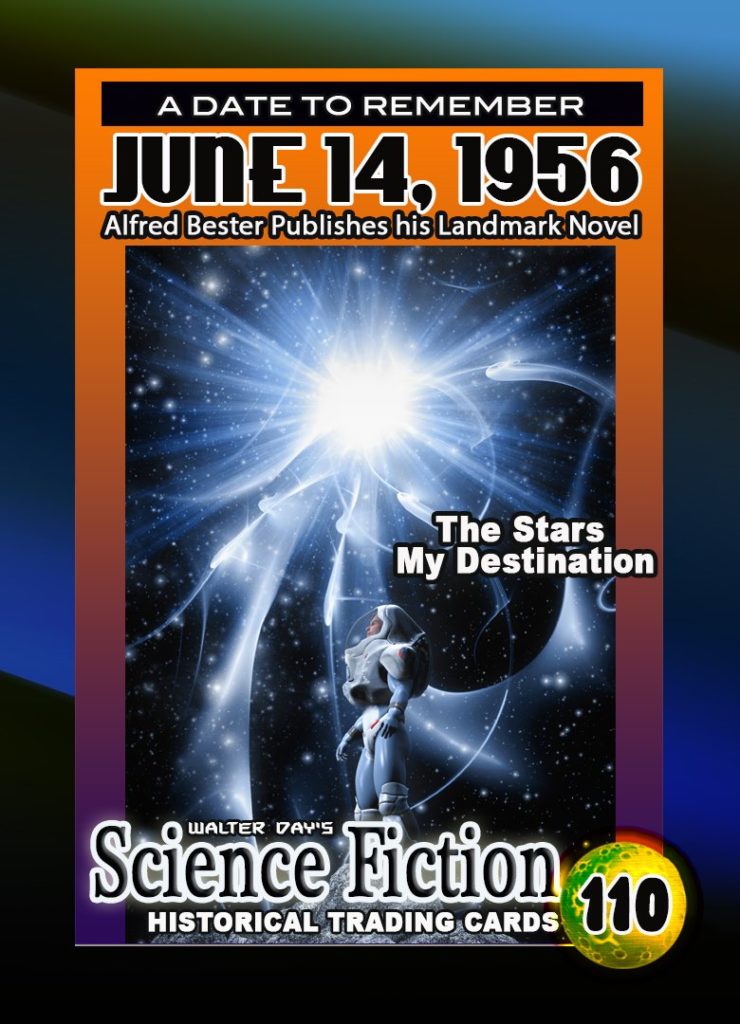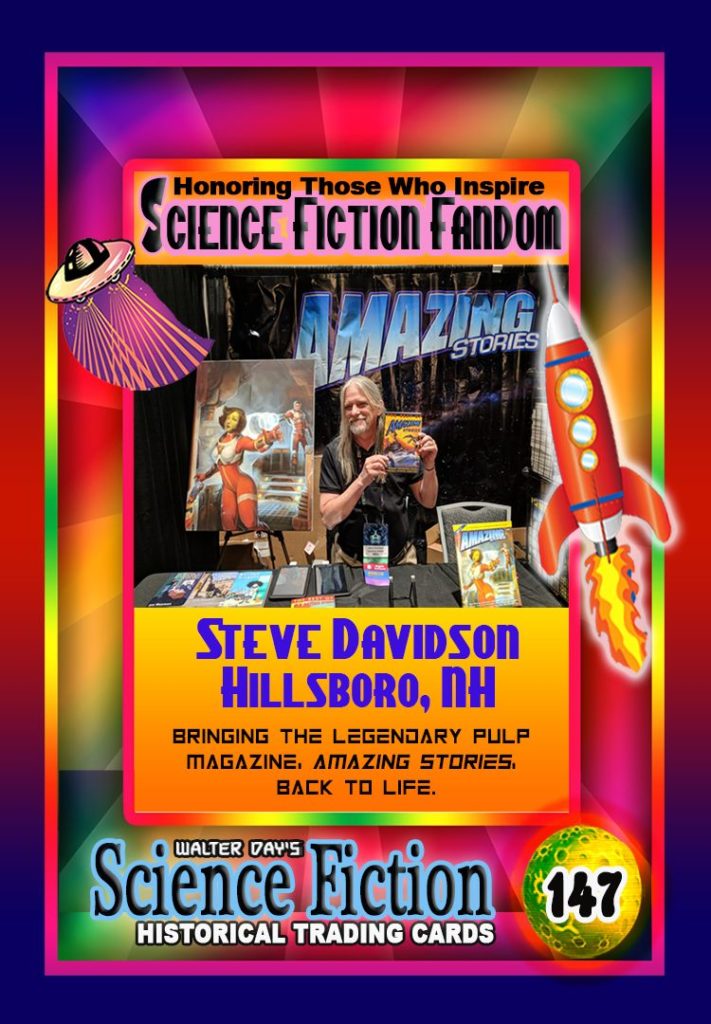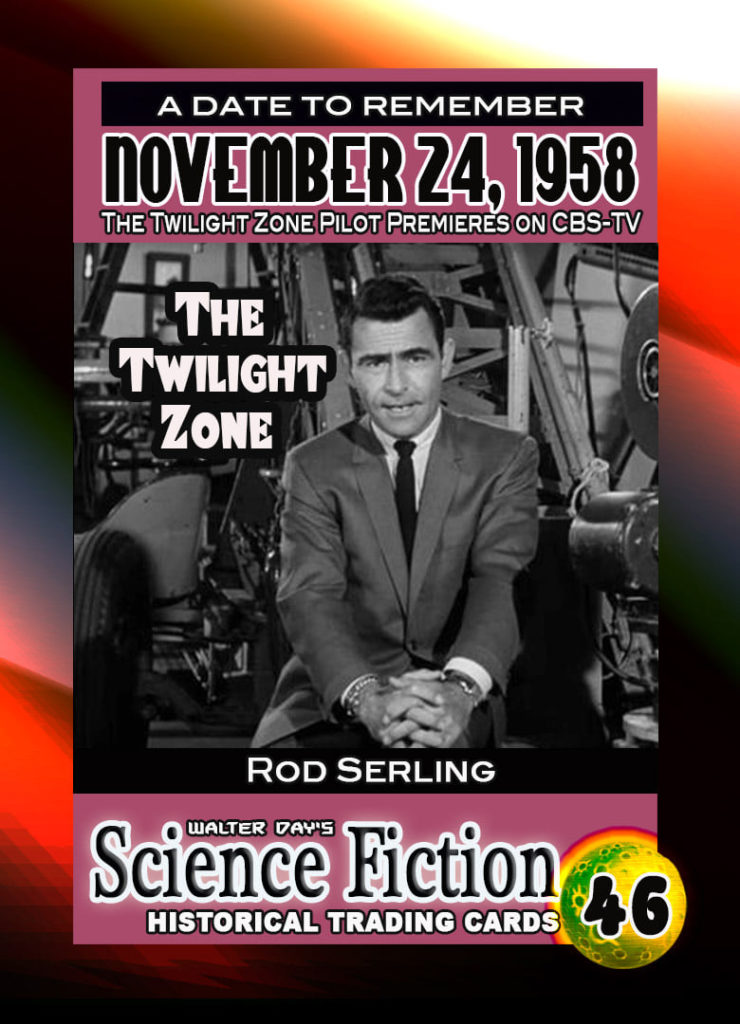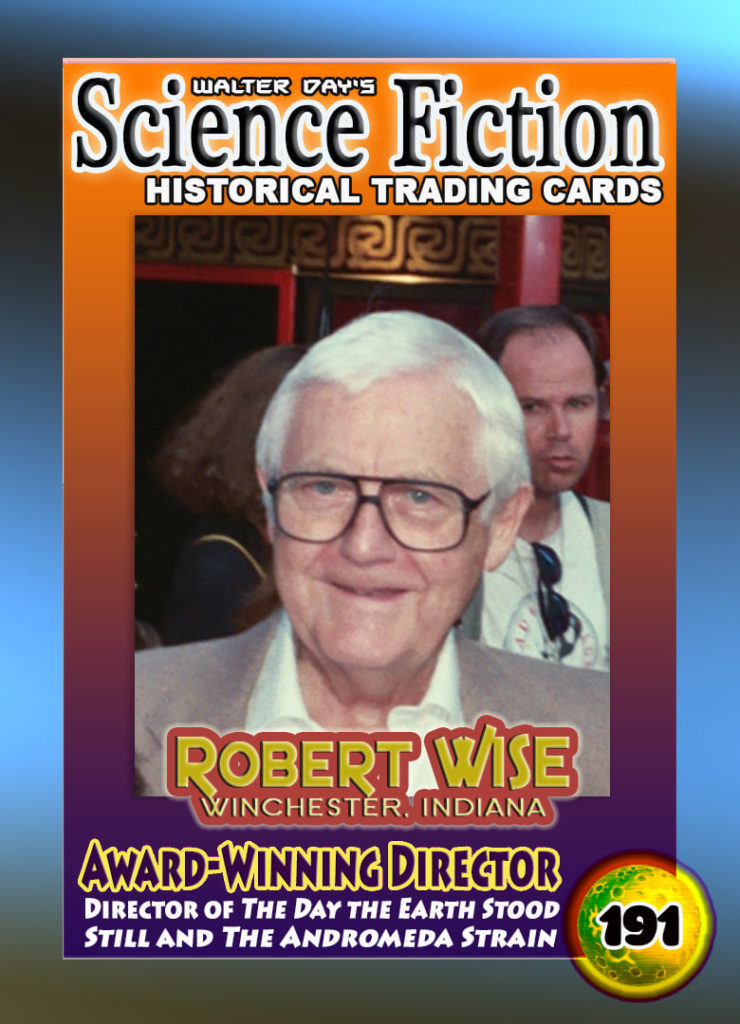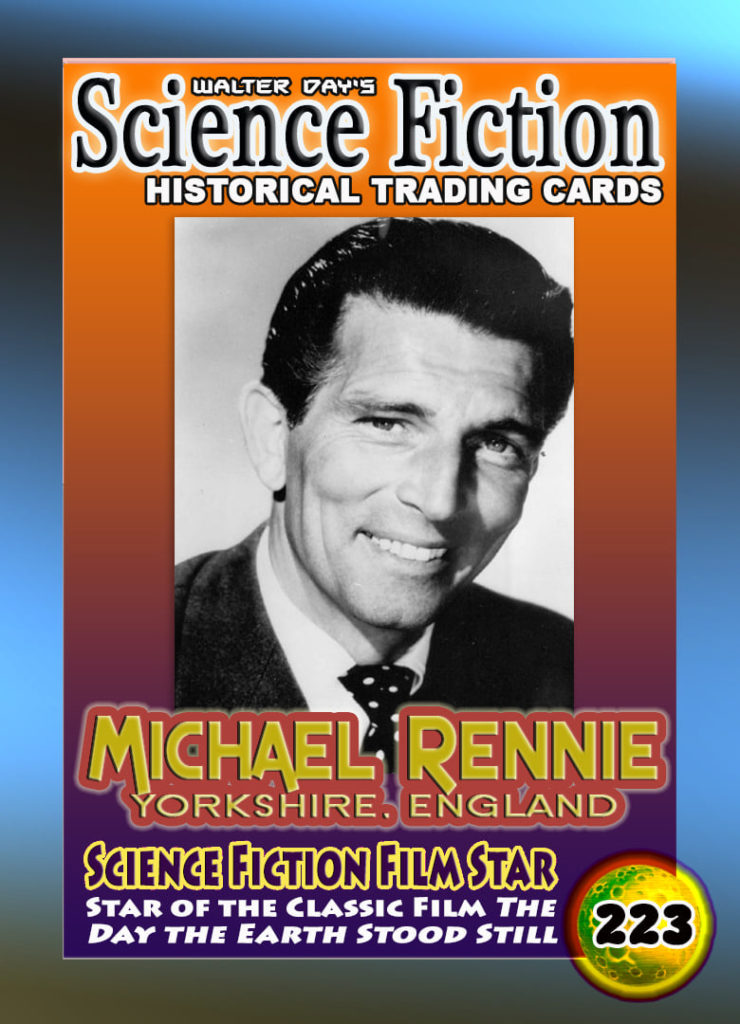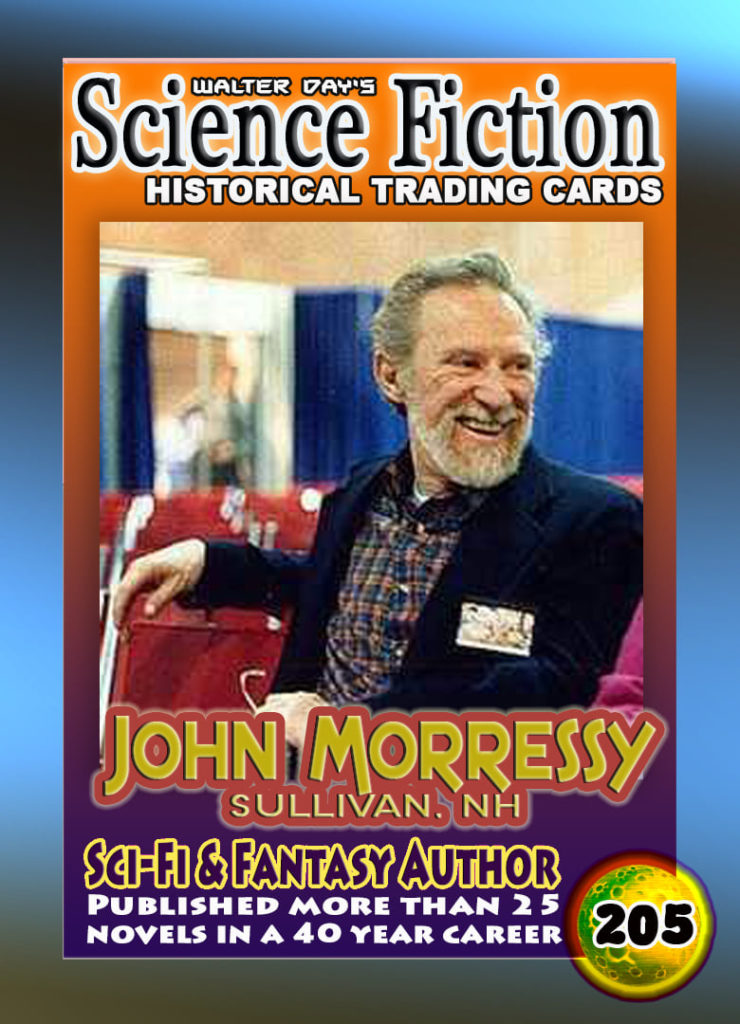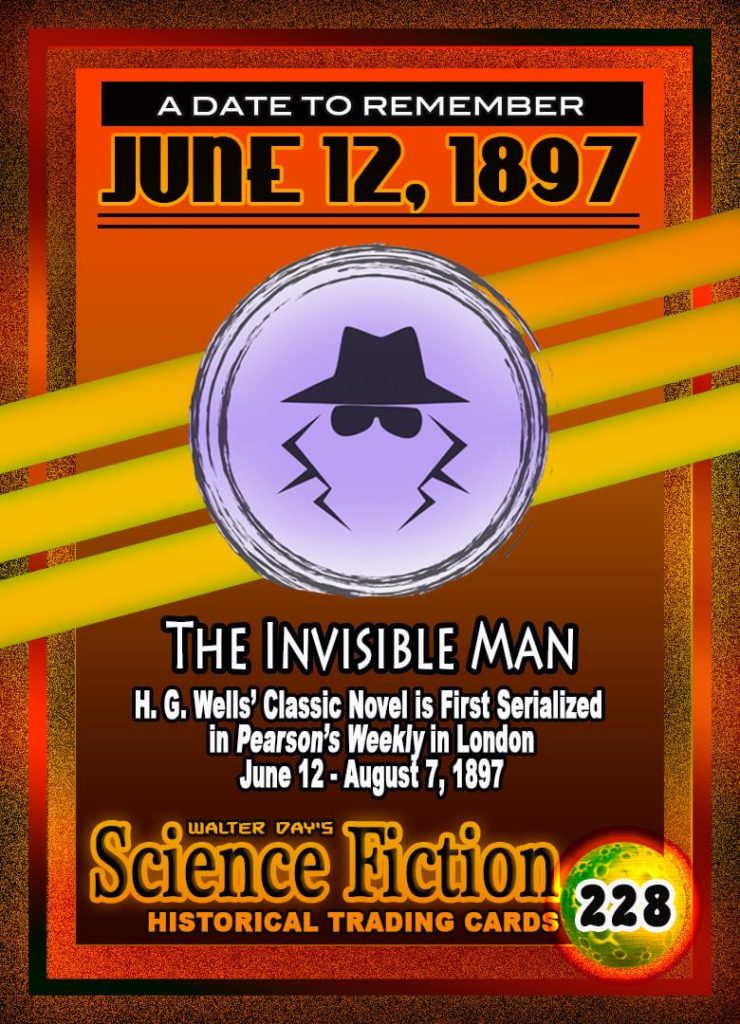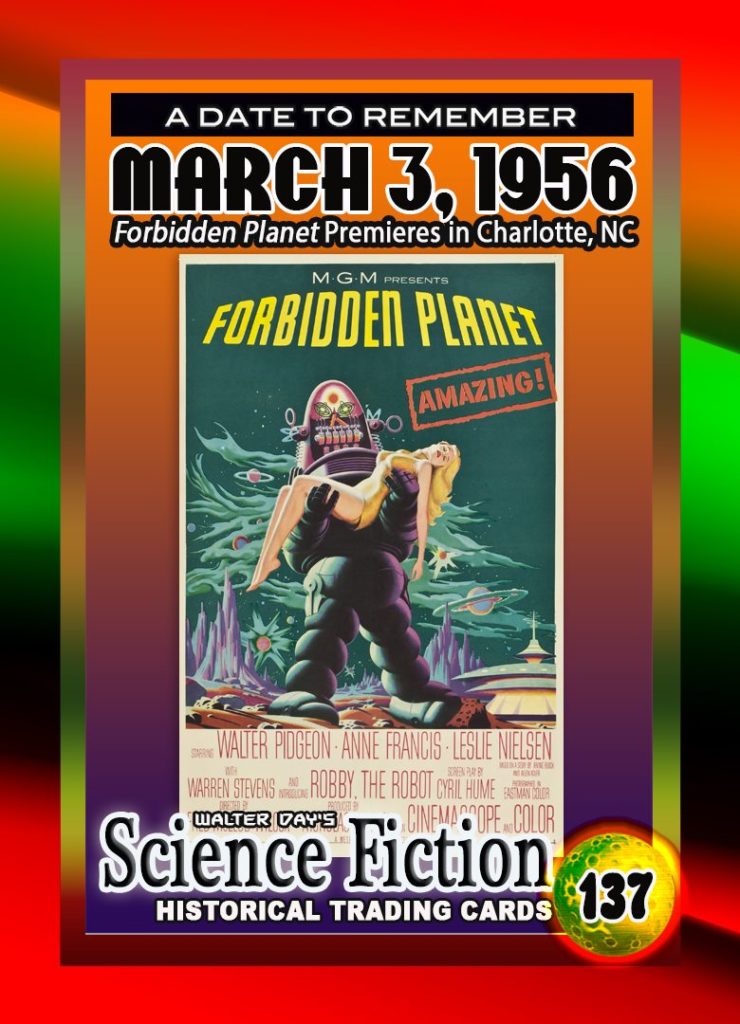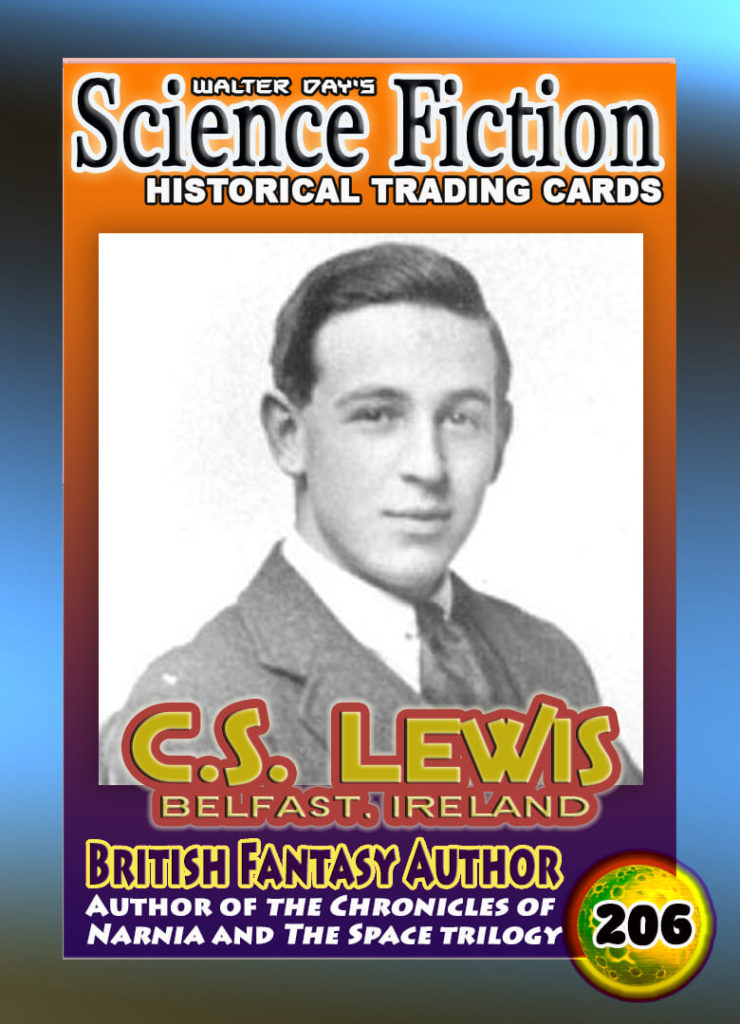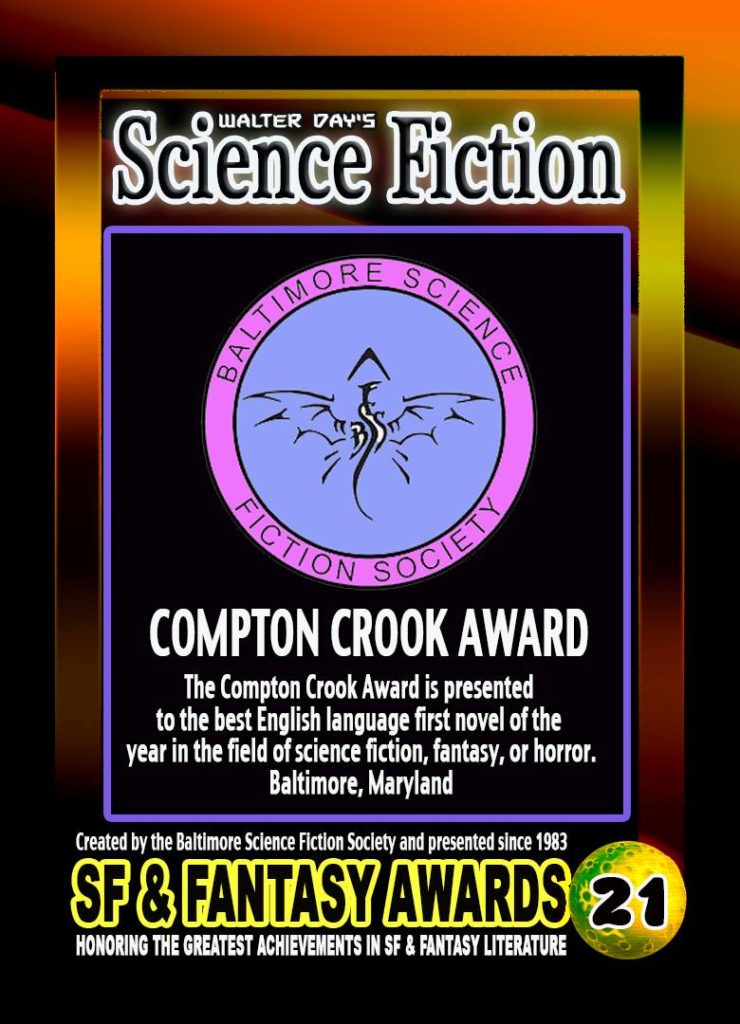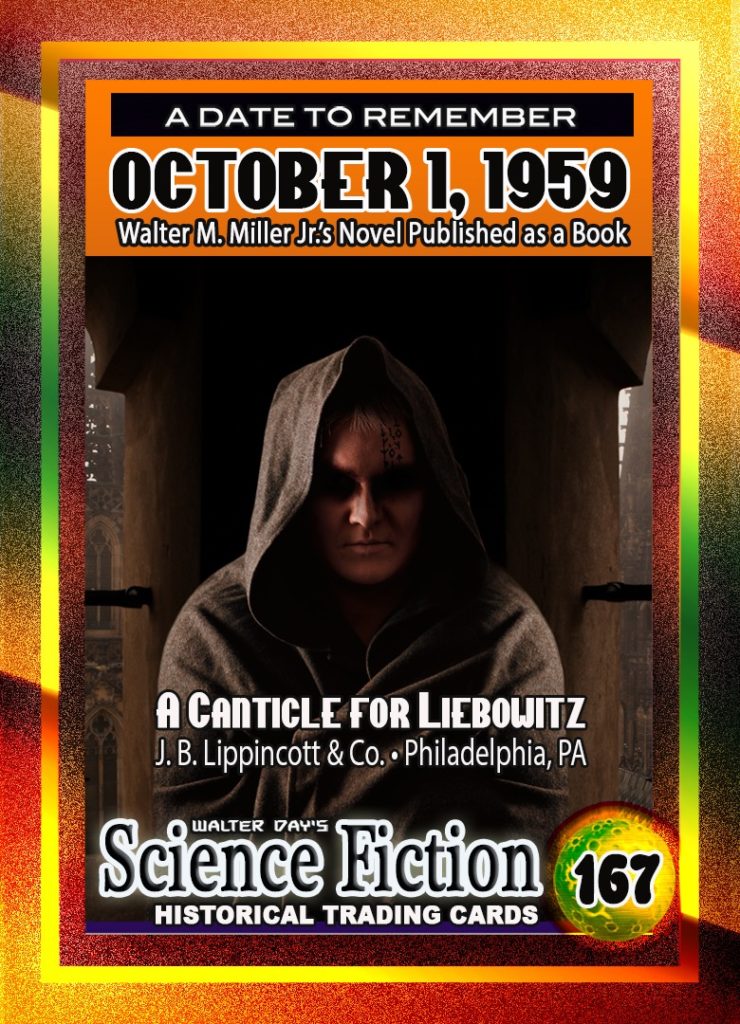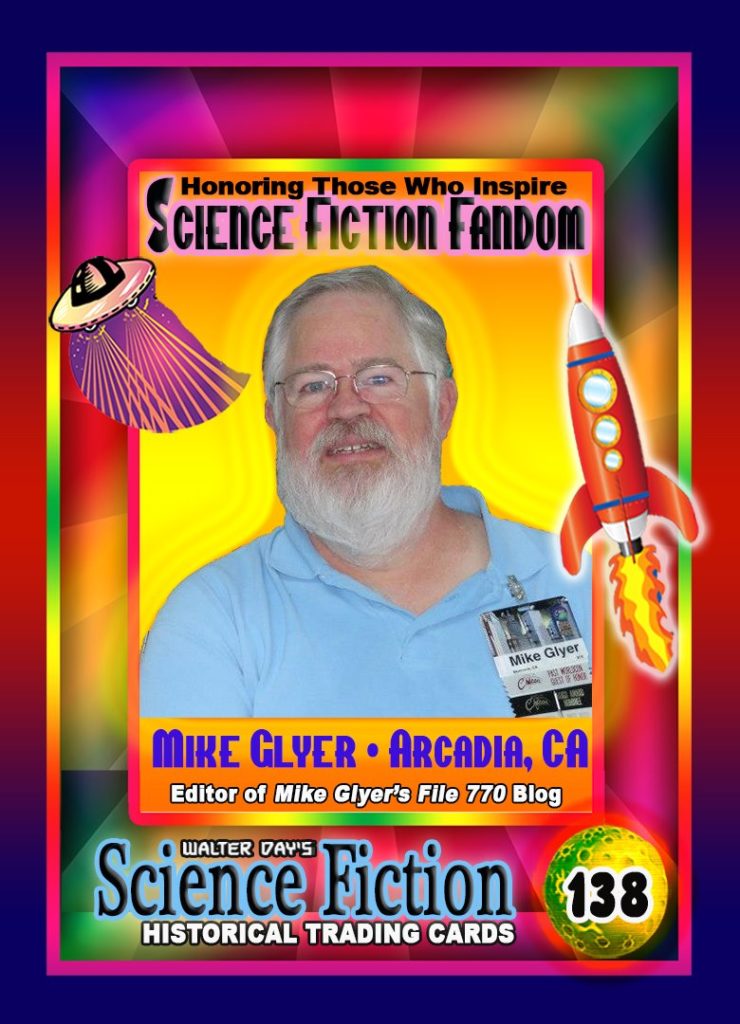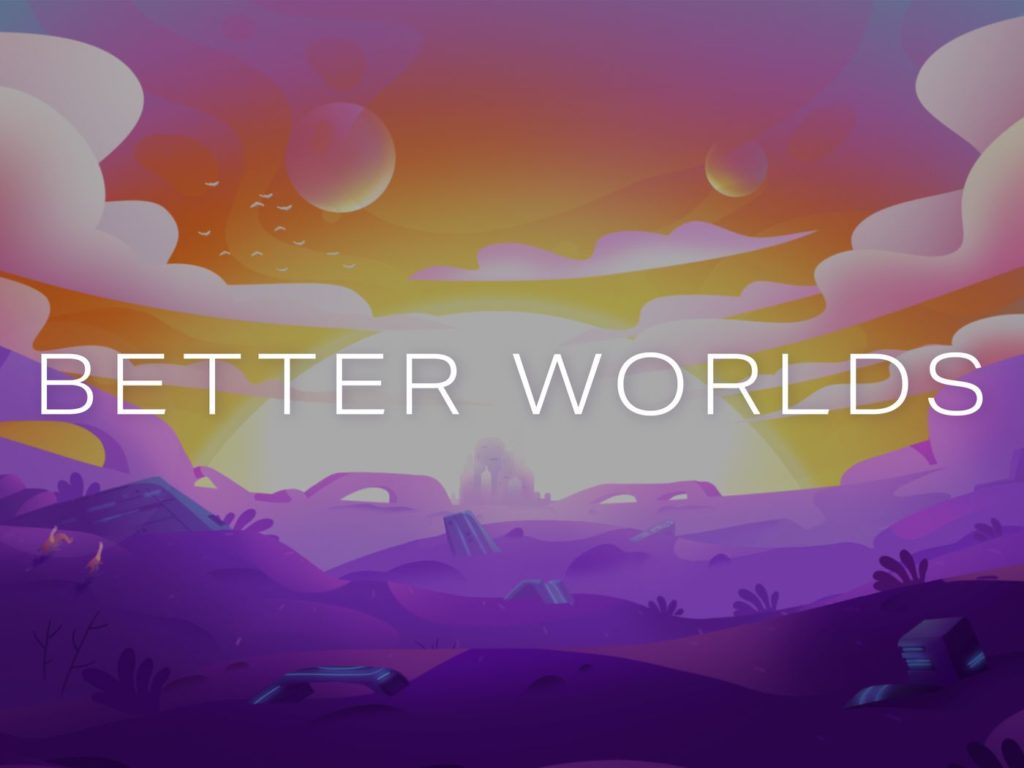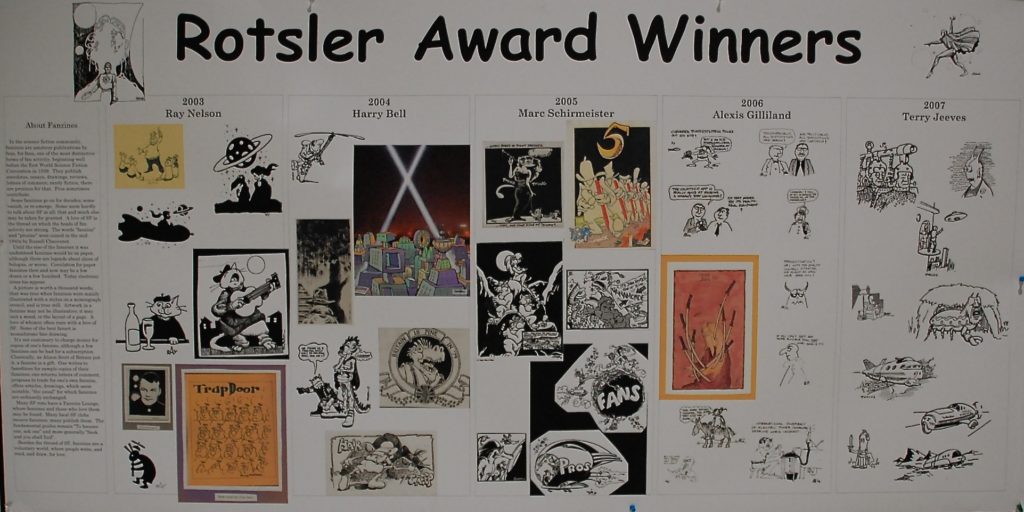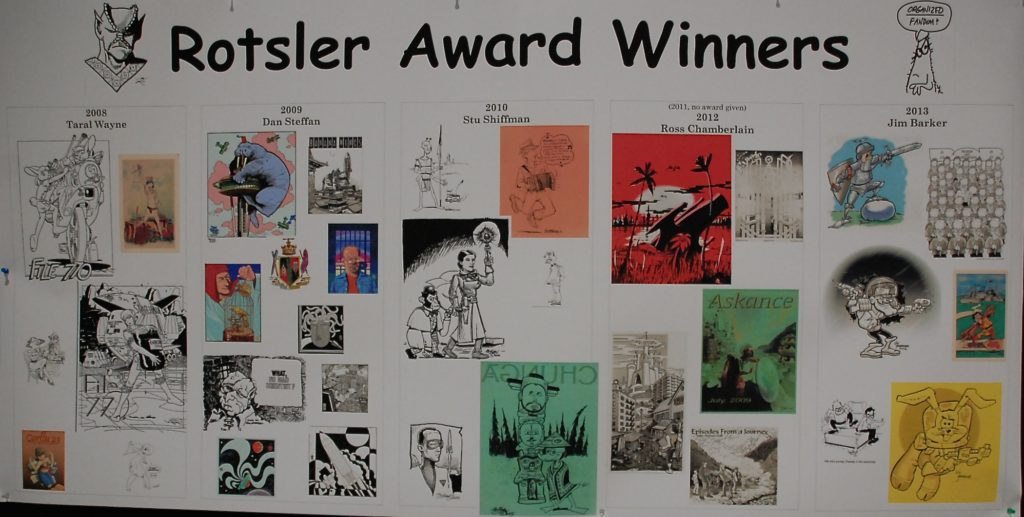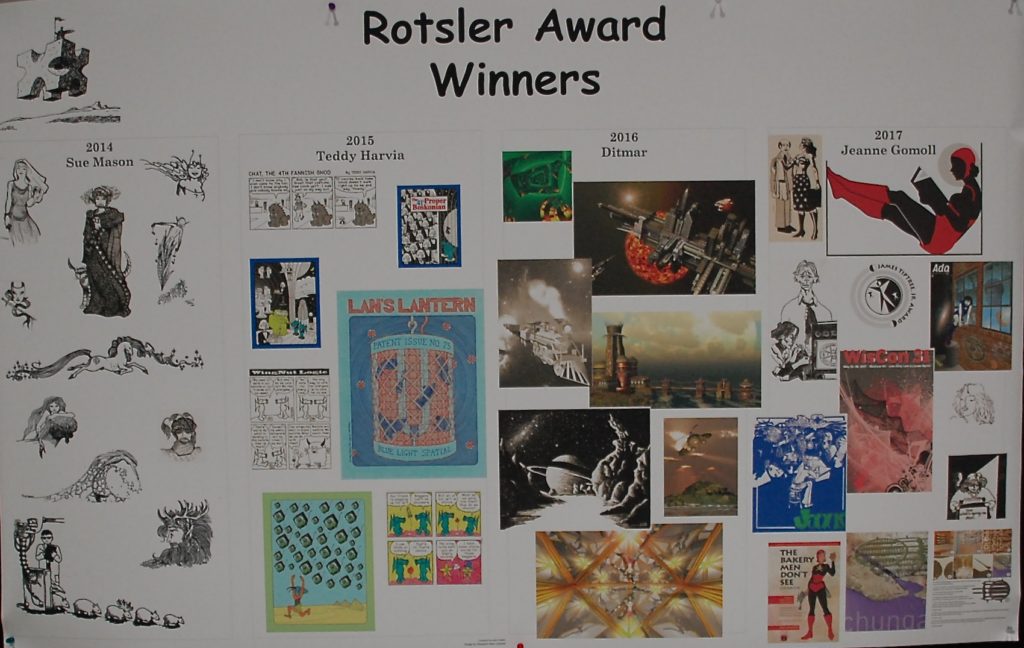(1) BRADBURY’S 1986 WORLDCON GOH SPEECH AND OTHER TREATS. History site Fanac.org has two segments of video highlights from the 1986 Worldcon in Atlanta.
ConFederation, the 44th World Science Fiction Convention, was held in Atlanta, GA in 1986, with Ray Bradbury and Terry Carr as Guests of Honor. Hosted by Eve Ackerman, this is “ConFederation (1986) Worldcon – Best of Confederation w/ Ray Bradbury Guest of Honor speech – Part 1” and includes candid scenes around the convention, an excerpt of a (very funny) performance on the recent history of SF, a little filk, and a little programming. Best of all are long excerpts from the Guest of Honor speeches. Terry Carr talks about his fannish past, and after that there are 20+ minutes of Ray Bradbury’s captivating Guest of Honor speech. Ray touches on fandom, Ray Harryhausen, John Houston, EPCOT Center and more, ending with a stirring affirmation. This is an outstanding talk by Ray Bradbury.” Thanks to Ron Zukowski, co-chair of ConFederation for permission to put this online.
“ConFederation (1986) Worldcon -Best of Confederation w/Bob Shaw, Ray Bradbury, Harlan Ellison-Part 2″ includes candid scenes around the convention, a salute to Julius Schwartz, Toastmaster Bob Shaw at the Hugos, Harlan Ellison on the Manly Wade Wellman auction (and accepting his Hugo), scenes of the Masquerade and hall costumes. There’s also the memorable non-acceptance of Judy-Lynn del Rey’s award. The video ends with the traditional closing ceremonies and thanks to the committee (including Joe Siclari who now runs the Fanac.org).
OMG – I’m in this one just after the 17-minute mark
(2) AFROFUTURIST YA PREVIEW. Gizmodo/io9 teases a preview chapter for Last Gate of the Emperor, a new Afrofuturist YA adventure from coauthors Kwame Mbalia and Prince Joel Makonnen. The book is due to be released May 4, 2021. “A Look Inside Last Gate of the Emperor, a YA Future Adventure Defined by Augmented Reality”.
In Cake Literary’s upcoming middle grade novel Last Gate of the Emperor—from co-authors Kwame Mbalia (Tristan Strong Punches a Hole in the Sky) and Prince Joel Makonnen—a young boy living in a technologically dense near-future grapples with the reality that while the world’s arguably become a more advanced and developed place, its bounty still isn’t exactly available to everyone.
(3) TARDIS MUST DODGE THE SUPER BOWL. The pandemic has forced Los Angeles Doctor Who convention Gallifrey One to call off its 2021 edition. The postponement to 2022 was announced today. The exact date in 2022 remains open, as the NFL has committed to play the Super Bowl in February in LA’s new stadium and has not fixed its own date yet.
It is with deep sadness that today we must announce that we are officially postponing the 2021 Gallifrey One convention to the first quarter of 2022, due to the ongoing worldwide COVID-19 pandemic emergency.
Gallifrey One has run successfully every year since our first event in 1990, and we’ve never intended to take a year off. But these are extraordinary times: infection rates are climbing, there are unknown factors regarding safety and community exposure, and there have been ongoing edicts from local and county officials in our area prohibiting all mass gatherings, so this news should come as no surprise to anyone. There is simply no way we can continue planning our event for next February with the same goals in mind, given that it’s very likely our lives won’t return to any semblance of normalcy until after a vaccine is proven effective and is widely circulated to the general population… which according to the medical community won’t be happening until at least sometime in the middle of next year.
(4) MIND IF I SMOKE? A satellite has traced smoke from the US wildfires over Northern Europe reports the German-language site Wetteronline. Here is a computer translation to English:
….For days, the smoke has been billowing over the skies of the US West Coast. In San Francisco, the sky turned into a deep red in the middle of the day. The column of smoke from a fire in California reached a record height of 17 kilometers. So far up, the particles with the jet stream can shift particularly quickly to the east, which has now happened.
A NASA satellite analysis shows how particles were transported from the west coast, first over North America and then across the Atlantic with a low pressure area. According to an analysis by the European Meteorological Satellite organization, the particles reached Central Europe on Friday.
(5) MEDIA ANNIVERSARY.
- September 12, 1993 — seaQuest DSV premiered on NBC. Created by Rockne S. O’Bannon who was also responsible for Defiance and Farscape, it counted Steven Spielberg among its legion of executive producers. The actual producers were Steve Beers, Gregg Fienberg and Oscar L. Costo. The cast was large and included Roy Scheider, Jonathan Brandis, Stephanie Beacham, Don Franklin and Michael Ironside. It lasted three seasons and fifty-seven episodes but it never had great ratings and was canceled. Three novels were written during the first season, two by Diane Duane and David Bischoff. There were also comics, action figures, replica badges and even t-shirts but a seaQuest DSV never made it out of the prototype stage alas.
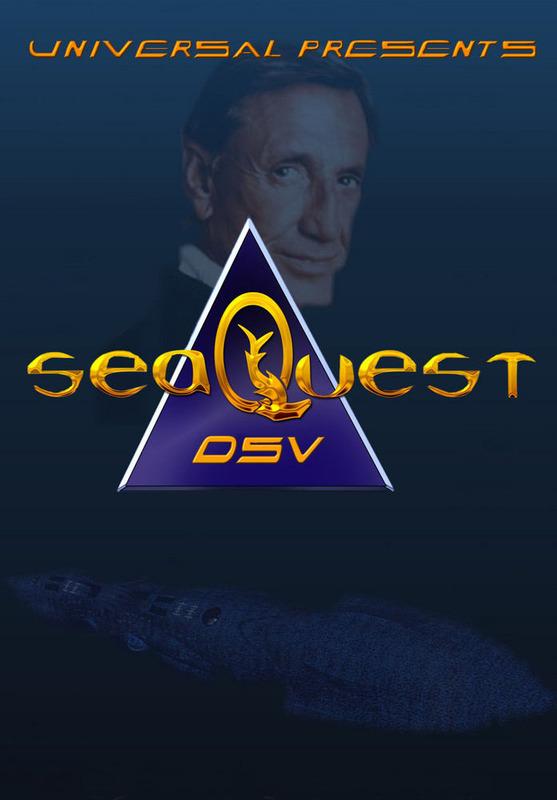
(6) TODAY’S BIRTHDAYS.
[Compiled by Cat Eldridge and John Hertz.]
- Bon September 12, 1897 — Walter B. Gibson. Writer and professional magician who’s best known for his creating and being the first and main writer of the pulp character The Shadow. Using the pen-name Maxwell Grant, he wrote 285 of the 325 Shadow stories published by Street & Smith in The Shadow magazine of the Thirties and Forties. He also wrote a Batman prose story which appeared in Detective Comics #500 and was drawn by Thomas Yeates. (Died 1985.) (CE)
- Born September 12, 1917 – Han Suyin. (Han is the family name.) She never liked Love Is a Many-Splendored Thing (H. King dir. 1955; she is portrayed by Jennifer Jones) which she felt distorted her novel. The Enchantress, her last, is ours; eight others; eight memoirs; seven historical studies including two of Mao and one of Chou (or as mainland China now prefers, Zhou). (Died 2012) [JH]
- Bon September 12, 1921 — Stanislaw Lem. He’s best known for Solaris, which has been made into a film three times. The latest film made off a work of his is the 2018 His Master’s Voice. Both iBooks and Kindle have generous collections of his translated into English works at quite reasonable prices. (Died 2006.) (CE)
- Bon September 12, 1922 — John Chambers. He’s best known for designing Spock’s pointed ears, and for the prosthetic make-up work on the Planet of the Apes franchise. Some of those character creations, including Cornelius and Dr. Zaius from the Planet of the Apes series, are on display at the Science Fiction Museum. He worked on the Munsters, Outer Limits, Lost in Space, Mission mpossible, Night Gallery and I Spy along with uncredited (at the time) prosthetic makeup work on Blade Runner. (Died 2001.) (CE)
- Bon September 12, 1940 — John Clute, 80. Critic, one of the founders of Interzone (which I avidly read in digital form) and co-editor of the Encyclopedia of Science Fiction (with Peter Nicholls) that I use every day for these Birthdays, and of the Encyclopedia of Fantasy (with John Grant) as well as writing the Illustrated Encyclopedia Of Science Fiction. All of these publications won Hugo Awards for Best Non-Fiction.and I’d be remiss not to single out for praise The Darkening Garden: A Short Lexicon of Horror which is simply a superb work.(CE)
- Bon September 12, 1942 — Charles L. Grant. A writer who said he was best at what he called “dark fantasy” and “quiet horror.” Nightmare Seasons, a collection of novellas, won a World Fantasy Award, while the “A Crowd of Shadows” short garnered a Nebula as did “A Glow of Candles, a Unicorn’s Eye” novella. And “Temperature Days on Hawthorne Street” story would become the Tales from the Darkside episode “The Milkman Cometh”. The usual digital suspects have decent but not outstanding selections of his works including a few works of Oxrun Station, his core horror series. (Died 2006.) (CE)
- Born September 12, 1942 – Marge Simon, 78. Edited Star*Line 1991-2011. Three Rhyslings, second woman to be named a Grand Master; two Elgins, one Dwarf Star, three Stokers, one Lord Ruthven. One novel, seven dozen shorter stories, four hundred fifty poems, a hundred twenty covers (see here, here), three hundred interiors (see here, here). Various co-authors including husband Bruce Boston. [JH]
- Born September 12, 1946 – Don Brautigam. Eighty covers; here is Michaelmas; here is the Feb 83 Asimov’s; here is Virtual Light. (Died 2008) [JH]
- Born September 12, 1957 – Deb Vanasse, 63. No Returns (with Gail Giles) for us, three other novels; six picture books, two nonfiction, about Alaska, where DV lived for thirty-six years. A Distant Enemy a Junior Literary Guild selection; it and Out of the Wilderness in John Gillespie’s Best Books for Young Teen Readers. DV and Andromeda Romano-Lax founded the 49 Alaska Writing Center. [JH]
- Born September 12, 1958 – Jean-Pierre Normand, 62. Seven dozen covers, seventy interiors. Here is Solaris 100. Here is the Apr 04 Analog. Here is the Anticipation (67th Worldcon) Souvenir Book. Here is Orbiter. Here is Polar Borealis 6. Artbook Science Fiction Illustrations. [JH]
- Bon September 12, 1962 — Mary Kay Adams, 58. She was Na’Toth, a Narn who was the aide to G’Kar in the second season of Babylon 5, and she would show up as the Klingon Grilka in the episodes “The House of Quark” and “Looking for par’Mach in All the Wrong Places” in Deep Space Nine. (CE)
- Born September 12, 1989 – Jorge Jacinto, 31. Seven covers for us; much else. Here is Beneath Ceaseless Skies 112. Here is Le monde du fleuve. Here is Bücherköning. Here is his card for Invoke Prejudice. He’s Portuguese, so here is a a port and here is a ship. Website here. [JH]
(7) SFF-INSPIRED MUSIC. Bandcamp, which is a site for selling music from independent musicians and labels, has highlighted nine Asian electronic musicians who have been inspired by speculative fiction.
Electronic music has historically had an uneasy relationship with narrative. While rock was elbowing its way into the category of “serious music” with the concept album, house and techno preferred to emphasize the kinesthetic utility of organized sound. Early producers often avoided the album format entirely, focusing instead on 12’’ singles that could be easily slotted into DJ sets, prioritizing emotional resonance over cerebral stimulation.
One notable exception, however, is electronic music’s association with speculative fiction, the system of literary genres that imagine alternate futures and realities. From the mystic Alvin Toffler-inspired futurism of techno progenitor Cybotron to the cli-fi storyline that underpins Grimes’ most recent album, there’s a rich tradition of computer-made music meditating on the technology that made it. Considering that electronic music almost by definition sounds futuristic, it’s perhaps unsurprising that its creators are so often interested in what that future will look like.
This tradition is being made richer by the recent explosion of electronic music created by East and Southeast Asian artists. Forward-thinking labels like CHINABOT and Do Hits have established brilliant rosters of producers either living in or hailing from Asia, all of whom are putting their own stamp on the genre’s decades-long dialogue with speculative fiction. In contrast to their more Eurocentric peers, these artists often incorporate components of Asian folklore and spirituality into their work, which are as likely to feature guzheng or suona samples as they are drum machines and synthesizers….
(8) BLOCKED FOR A REASON. Adam-Troy Castro is among those rejecting the Facebook Unblock Challenge:
Lots of people are saying, “Hell no,” to the “Facebook Unblock Challenge,” this widely spread meme that insists we should unblock all the people we barred from our Facebook activities and then apologize to them.
The thing is, people seem to be treating this as if it’s merely someone’s piss-poor Utopian idea.
No. It is not that. It is worse.
It is trolling.
It is a stone attempt, possibly connected with the election, to gaslight those of us who didn’t want racists or trolls or abusive pieces of shit in our lives
…Well over a hundred people who I quite rightly decided, for one reason or another, I didn’t need on my page. And that is not all that many. I cited the number to Stonekettle’s Jim Wright once and he told me that it was downright adorable.
I’ll tell you what “Unblock and Apologize” is all about. It is an attempt — possibly Russian — to get good people to self-gaslight, to wonder if they were truly fair in all those cases where they had to dropkick people, to delete their asshole filters and to endure all that bullshit ALL OVER AGAIN. There is a reason it is taking place before the election. It is so the piece of shit you barely remember, who you blocked for advocating genocide, or something of equal vileness, can have access to you again. It is an attempt to break you.
This is not just a stupid idea. This is a disinformation campaign.
(9) WINNING ASTRONOMY PHOTOS. The Guardian published a gallery: “Astronomy photographer of the year (2020) winners – in pictures”.
Images of the Milky Way, California nebula and Andromeda galaxy are among the winners of the Insight Investment astronomy photographer of the year award. An exhibition of the winning pictures can be viewed at National Maritime Museum in Greenwich, south-east London, from 23 October
(10) THE LAST TAKEOFF OF JONNY QUEST. StrucciMovies makes a case that “Adult Swim just cancelled the best show on television.” CONTENT WARNING.
“What if a raunchy parody of Jonny Quest and other old school adventure cartoons grew into one of the richest, funniest, and most human shows on television? What if two pop culture geniuses and their tiny crew spent 17 years and seven seasons crafting a show that quickly grew tired of making fun of its world and instead chose to invest in it with layered mythology, complex characters, and fascinating mysteries? What if the crude animation of the early seasons evolved into quietly beautiful work, showcasing stunning action, brilliant character designs, and a downright cinematic framing? The Venture Bros. was the quiet miracle of Cartoon Network’s Adult Swim line-up, an always-evolving magic trick that was never content to sit still. A silly cartoon that learned to let its characters, and stakes, matter.”
(11) VIDEO OF THE DAY. A tribute to the late Diana Rigg.
[Thanks to Cat Eldridge, JJ, John King Tarpinian, Chris Barkley, Mike Kennedy, Andrew Porter, Michael Toman, John Hertz, Cora Buhlert, N., Rob Thornton, and Martin Morse Wooster for some of these stories. Title credit goes to File 770 contributing editor of the day Anna Nimmhaus.]


